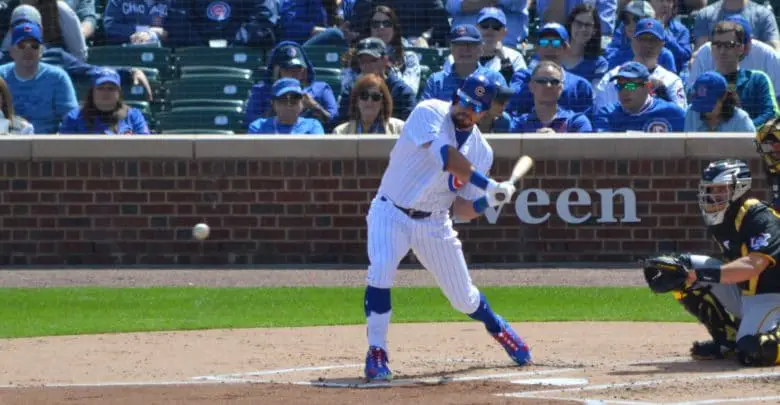
Kyle Schwarber’s Numbers Being Dragged Down by Too Much Contact
Kyle Schwarber has been hitting at the top of the Cubs order of late, which is a solid idea in theory due to his on-base skills and power bat. He’s walked at a 14.3% clip and has hit five home runs since being placed atop the order on May 16, a span of 85 plate appearances.
The rest of his offensive numbers are a much different story, namely a pedestrian .751 OPS and a 95 wRC+ that says he’s 5% worse than the average hitter. In short, his offensive performance hasn’t met expectations. Two main factors seem to be contributing to his offensive struggles: anemic batting average and reduced slugging.
His numbers are in some ways similar to the ones that got him sent to Iowa for a month in 2017, which is concerning to an extent. There are, however, some differences that bode well for Schwarber moving forward. More on that in just a moment.
Batting average is often an overrated statistic, since the important thing is to reach base no matter how it happens. Being a .238 hitter with a .356 OBP made the Middletown Masher an impact offensive weapon in 2018. But his average is only .220 this season and it’s been only .214 in the leadoff spot, with a .332 overall and .318 leadoff OBP.
Shifting clearly takes away some potential hits on the ground to the right side, though Schwarber is actually pulling the ball less than ever before (40.6%). But if he’s going the opposite way 32% of the time, up from 23% in 2018, why is his batting average on balls in play (.263) 25 points lower this season?
Schwarber is swinging at the fewest pitches of his career (40.3%), while making more contact (76.3%) than ever before. Those numbers seem good at first, indicating a patient approach and good bat-to-ball skills, but the problem is where the increased contact is coming from. His 82.9% Z-Contact, the rate of contact in the strike zone, is up negligibly over last season (82.1%). But his O-Contact, which is on pitches outside the zone, has shot up from 54% last year to 63.3% in 2019.
Unless you’re Vladimir Guerrero, it isn’t easy to square up a pitch outside the zone. That’s something Starlin Castro has often struggled with and Cubs fans surely remember his preternatural ability to get his bat on just about anything. The issue is that hitting bat balls can often result in sending cans of corn to the outfield, which Schwarber has done too often.
The big left fielder’s exit velocity and hard-hit rates are at career highs, but his slugging (.419) and ISO (.199) are way down, indicators that he is just missing big damage too frequently. CI’s Evan Altman recently noted how Schwarber is taking a lot of called third strikes, which is a sign that he’s being too passive late in counts.
While any sort of approach change is much easier said than done, it seems as though Schwarber needs to dig in and look for strikes he can drive early in the count. Pitchers aren’t just going to throw him meatballs, though, and that may be why he’s going after those balls off the plate. Then he’s taking good pitches late for strikes.
It’s a difficult conundrum to work out of, but Schwarber clearly has a good eye and he is hitting the ball harder than ever before. Consistently applying that power to more hittable pitches would have him breaking out in a big way. And we’re not talking about an overnight change, just incremental adjustments over time.
And if he can do that, we’re all in for a very fun summer.

